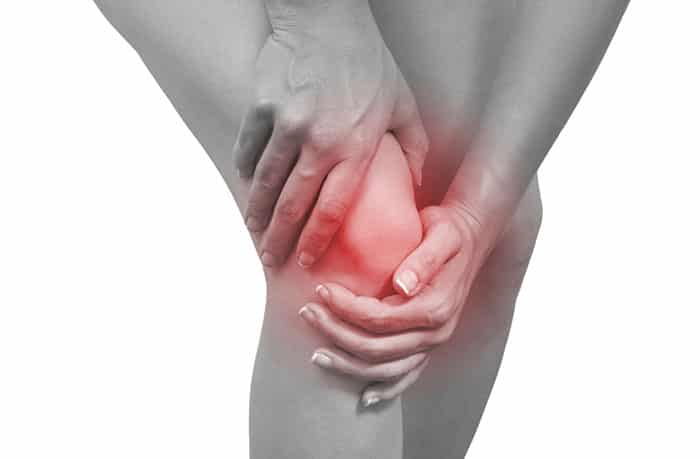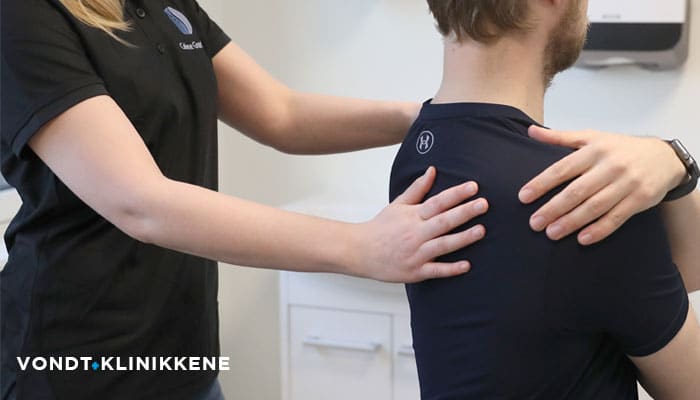
Knepping i Kneet | Cause, diagnosis, symptoms, exercises and treatment
Troubled by knee stiffness? Have you ever wondered why your knees make so much noise? Learn more about the symptoms, cause, treatment, exercises and possible diagnoses for knocking in the knee. Feel free to follow and like us Our Facebook page.
Noise in the knee? Or a feeling that you have gravel in your knee? Many people are bothered by such buttoning in the knee when they stretch or bend the leg - and it is far more common than you might think. It can affect one knee or both knees, and is usually due to stress-related causes or it can also be due to trauma in certain cases. But the sound itself is normally due to what we call "crepitus", ie sound due to pressure or structural changes in the joint. Among other things, it may indicate a lack of space. It is particularly common in the elderly, but can also occur at a younger age. If you have pain and buttoning in the knee, we strongly recommend that you consult a doctor, physiotherapist or modern chiropractor for examination and possible treatment.
The Pain Clinics: Our Interdisciplinary and Modern Clinics
Our clinic departments at Vondtklinikkene (click here for a complete overview of our clinics) has a distinctively high level of professional expertise in the investigation, treatment and rehabilitation of knee diagnoses. Contact us if you want the help of therapists with expertise in knee pain.
- Overview article on Knee pain
If you want to know more about the pain in the knee, you can read extensively about this in this overview article below. This article here, on the other hand, is dedicated to making noises, crunching and kneeling.
Read more: - This You Should Know About Knee Pain
Are you wondering something or do you want more of such professional refills? Follow us on our Facebook page «Vondt.net - We relieve your pain»For daily good advice and useful health information.
Anatomy of the knee
To understand a little more about why the knee makes noises, crunches and bumps, we need to take a quick refresh on how the knee is made up.
The knee is known to be the largest joint in the whole body, and is made up of the femur (femur), inner tibia (tibia) and patella. The kneecap moves back and forth as we straighten or bend the leg. Around the knee joint itself, we find ligaments, tendons and muscles that are present to stabilize the joint and ensure optimal function. Inside the knee joint itself - between the femur and the tibia - we find the meniscus. The meniscus is a kind of fibrous cartilage that allows the bones to slide back and forth as we move. The entire knee joint is what we call a synovial joint - which means that it has a synovial membrane (membrane) and a thin layer of synovial fluid. The latter lubricates and keeps the cartilage moving.
On the underside of the patella we find cartilage - and it is thus when this cartilage rubs against, or near, the femur that noise and buttoning can occur in the knee. Lack of stability muscles is one of the most common causes of stress-related and trauma-related injuries to the knee joint.
Relief and load management for knee pain
In case of noises and knocking in the knee, it may be a good idea to give the knee a little better working conditions and stability. Use of one knee compression support can help you give rest and support to your knee during bad periods. Compression supports also contribute to increased circulation and can thus also help to reduce fluid swelling in your knee.
Tips: Knee compression support (The link opens in a new window)
Click on the image or link to read more about the knee compression support and how it can help your knee.
Causes: But why are my knees fucking?
Although the clenching and crunching you hear in your knees may be due to cartilage irritation / lack of stability muscles, it can also be due to normal air bubbles. You heard right - when we move a joint, there can actually be pressure changes inside this joint and associated "buttoning". This type of joint fracture is harmless and a study that addressed the hypothesis "is it dangerous to snap your fingers?" concluded that joint buttoning was actually like massage for the joint - and that it potentially contributed to better joint health.
But in the vast majority of cases, you should take buttoning in the knees seriously - it can involve cartilage that rubs against the joint surface when you move the knees. This is a strong indication of a lack of stability muscles in the bones and hips, which means that the load on the cartilage and meniscus is too high. In fact, the majority of functional knee problems are due to a lack of strength in the hip muscles. If you feel hit by this - then we can highly recommend these exercises.
Read more: - 6 Exercises for Stronger Hips

If you feel that the knee is locking or that there is pain inside the knee during certain movements, this may indicate meniscus / meniscus injury, damage to the tissue or malfunction of the tendons. If there is stronger pain and swelling, then it can also be an indication of running knees, cartilage damage or Osteoarthrtitis.
Diagnosis: How is the cause of buttoning in the knees diagnosed?
A clinician (such as a physiotherapist or chiropractor) will, through functional tests and storytelling, be able to pinpoint possible causes of your knees and bruises. Such an examination will often consist of strength tests, orthopedic tests (which include examining for damage to ligaments and meniscus) and movement testing. In case of suspected damage to structures, image diagnostics may be relevant, but in most cases you will be able to do without it.
Treatment of buttoning in the knees

It is wrong to say that you treat buttoning in the knees - because what you actually treat is the reason why the buttoning has occurred, as well as for the purpose of preventing deterioration (for example further cartilage wear).
Treatment and any action taken will depend on the nature and cause of the problem. Some possible treatments may include:
- Acupuncture (intramuscular needle therapy): Needle treatment for pain-sensitive calves and thighs can contribute to less pain and improved function.
- Joint Treatment: By optimizing mobility in the hip, back and pelvis, this can help provide a basis for more correct strain on the knees. Joint treatment should be performed by a publicly licensed practitioner with expertise in joint mobilization and joint manipulation (chiropractor or manual therapist).
- Muscular treatment: Pain in the knees can cause compensatory pain in the calf, thigh, hip and the sitting region. To loosen up in tight muscle fibers, muscular techniques may be helpful.
- Exercise and movement: Never let knee pain stop you from exercising and keep moving - but rather adapt the training to your knee health. For example, you can go for a walk instead of jogging - or reduce your weight when you do strength training (to adapt to your pain situation). Always remember to warm up well before training and to stretch the muscles after (cooldown).
- Weight Reduction: Being overweight puts more strain on your knees than if you have a more normal BMI. Think about diet and exercise - it's actually so simple that 'if you burn more calories than you eat, you will lose weight'.
- Sole Customization: If your knee problem is aggravated by transverse flatness or overpronation then custom soles may be appropriate for your feet.
We recommend that you contact a publicly licensed therapist (physiotherapist, chiropractor or manual therapist) if you require investigation and treatment for your knee problem. They can help you to investigate possible causes, as well as any treatment and training.
Summary
Knee sprains are often due to underlying causes - which should often be addressed to avoid further strain injuries to the knees. We place special focus on increased training of the hips and thighs when it comes to prevention and treatment of knee pain, as well as associated buttoning in the knees.
Do you have questions about the article or do you need more tips? Ask us directly via our facebook page or via the comment box below.
NEXT PAGE: - This You Should Know About Knee Pain
Click on the image above to proceed to the next page.
 Follow Vondt.net on YOUTUBE
Follow Vondt.net on YOUTUBE
(Follow and comment if you want us to make a video with specific exercises or elaborations for exactly YOUR issues)
 Follow Vondt.net on FACEBOOK
Follow Vondt.net on FACEBOOK
(We try to respond to all messages and questions within 24-48 hours. We can also help you interpret MRI responses and the like.)






Leave a reply
Want to join the discussion?Feel free to Contribute!